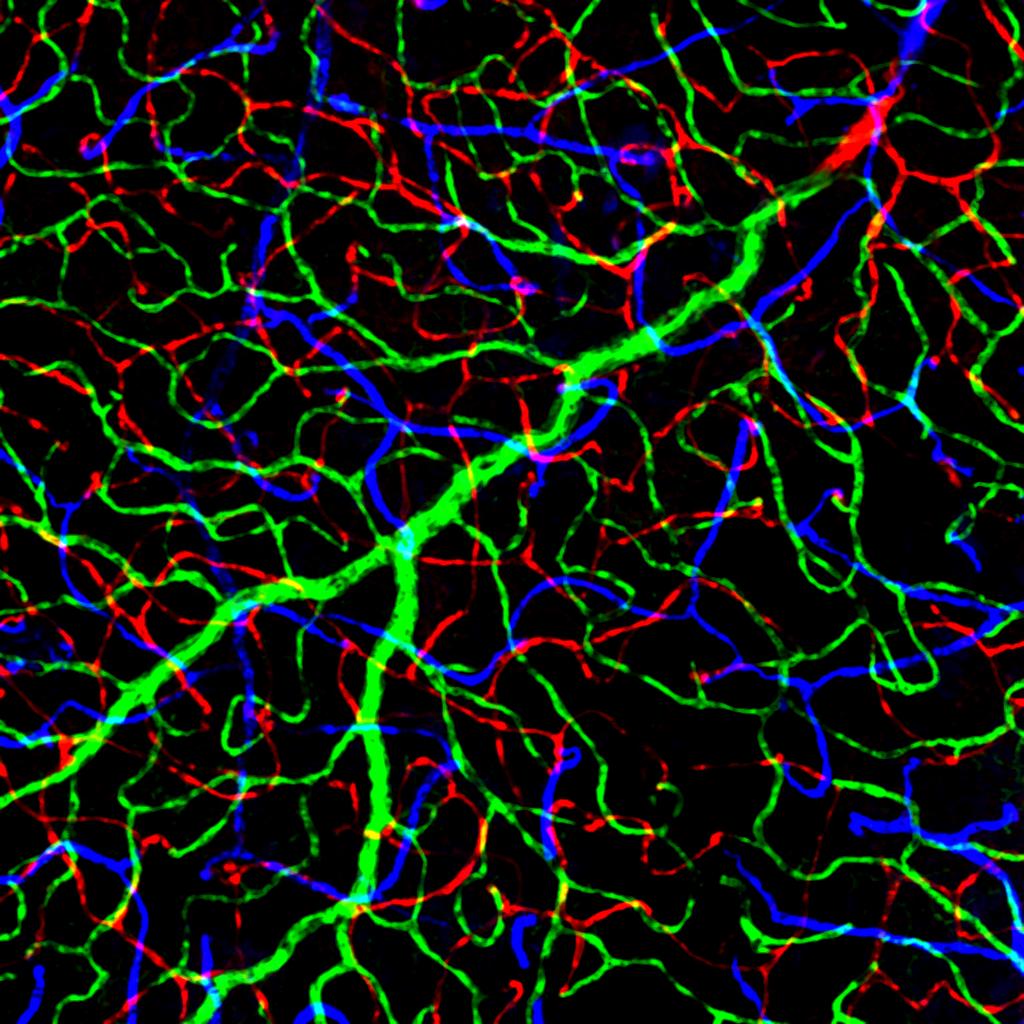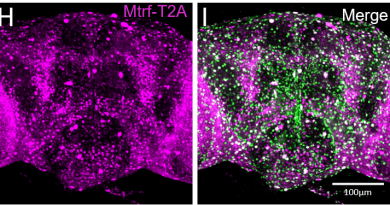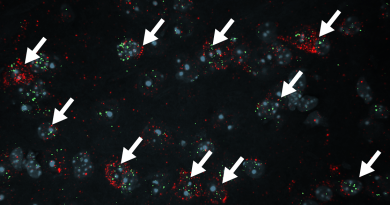Social amoeba cast wide, lethal DNA nets to kill invading bacteria
By Ruth SoRelle, M.P.H.

The amoeba Dictyostelium discoideum begins as a soil-dwelling single cell organism. When stressed, many individual cells coalesce to form first a slug and then a fruiting body consisting of spores balanced atop a dead stalk. Scientists use it as a model organism for studying cellular signals, disease and the movement of cells in response to a chemical stimulus (chemotaxis).
Bacteria that seek to attack the multicellular slug stage of the social amoeba face an effective defensive mechanism. The amoeba cast traps made of DNA nets studded with antimicrobial granules. The bacteria stick to and die on the nets. This defensive strategy is similar to that seen in mammalian immune cells called neutrophils, said an international scientific partnership from Baylor College of Medicine and the University of Geneva in a report that appears online in Nature Communications.
Usually, phagocytic amoebae consume bacteria for food, but bacteria can sometimes cause an infection. To cure that infection, amoeba Sentinel cells from gently disaggregated slugs hunt bacteria (green) and trap and kill them by casting toxic DNA nets (red). Nat. Commun. 7:10938 doi: 10.1038/ncomms10938 (2016).
In studies in the laboratory, researchers from Baylor and the University of Geneva found that Sentinel cells in the multicellular social amoeba slug use a form of toll-like receptor (that recognizes molecules from the microbes) as well as an enzyme called NADPH oxidase in order to form these extracellular nets.
“The elaboration of DNA-based nets happens in both amoebae and humans,” said Dr. Adam Kuspa, professor of biochemistry and molecular biology at Baylor College of Medicine and a senior author of the report.
“It’s a primordial immune system that requires the same machinery we see in humans. To me, it pushes the needle toward convergent evolution,” said Kuspa.
This means the pathway for immune protection in the multi-cellular slug is similar to that seen in humans and other mammals.
“The primary antecedents of multicellular organisms are the ability to recognize self from non-self and to fight off predators. All four lineages of multicellular eukaryotes accomplish this,” said Kuspa.
“We have thus discovered that what we believed to be an invention of higher animals is actually a strategy that was already active in unicellular organisms one billion years ago,” said Dr. Thierry Soldati, a senior lecturer in the department of biochemistry at the University of Geneva and corresponding author of the report.
Others who took part in this work include Xuezhi Zhang of the University of Geneva and Olga Zhuchenko of Baylor.
Funding for this work came from the Swiss National Science Foundation, the European Cooperation in Science and Technology (COST Action BM1203/EU/ROS) and the National Institutes of Health (Program Project Grant HD 39691).
 Dr. Adam Kuspa also is senior vice president and dean for research at Baylor and professor in the departments of molecular and human genetics and pharmacology and the developmental biology program and in the integrative molecular and biomedical sciences program. He is the interim dean of the Graduate School of Biomedical Sciences and holds the Salih J. Wakil, Ph.D. Endowed Chair in the Verna and Marrs McLean Department of Biochemistry and Molecular Biology.
Dr. Adam Kuspa also is senior vice president and dean for research at Baylor and professor in the departments of molecular and human genetics and pharmacology and the developmental biology program and in the integrative molecular and biomedical sciences program. He is the interim dean of the Graduate School of Biomedical Sciences and holds the Salih J. Wakil, Ph.D. Endowed Chair in the Verna and Marrs McLean Department of Biochemistry and Molecular Biology.



